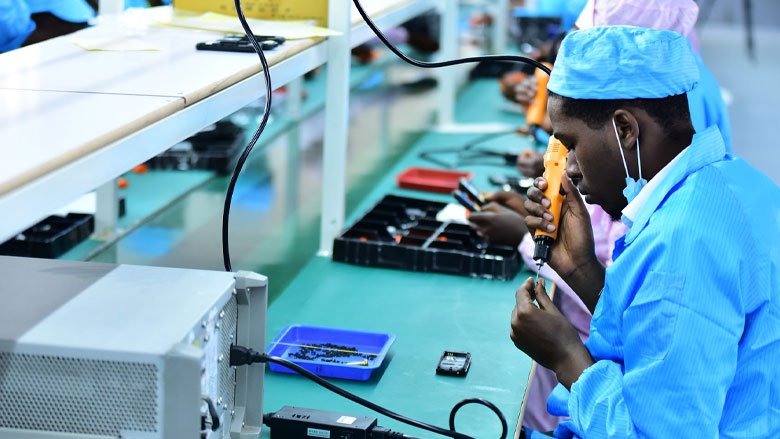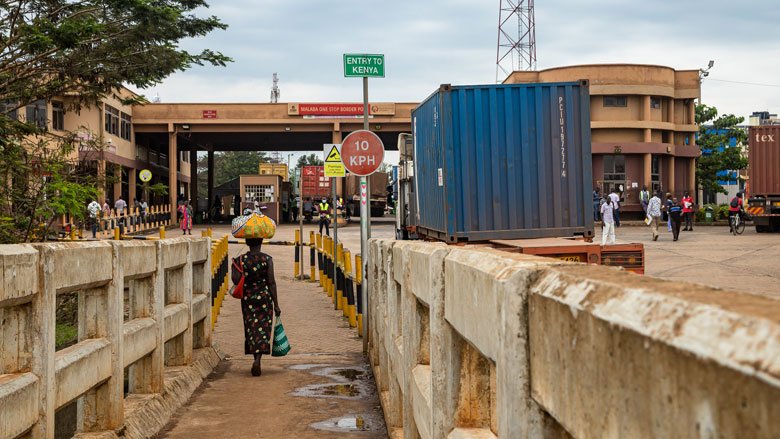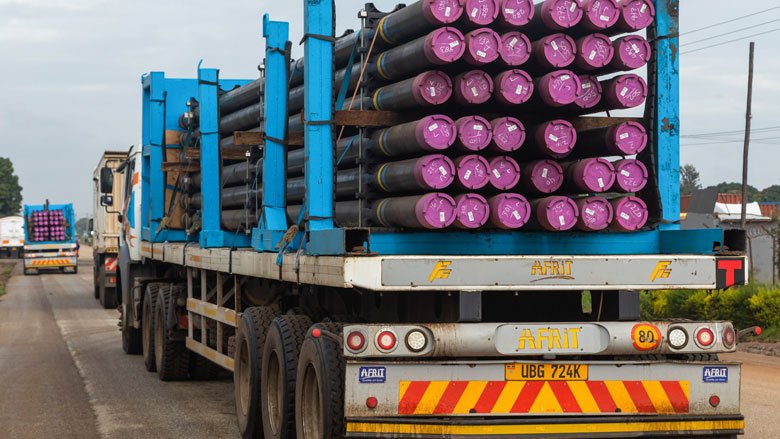Kampala, December 15, 2022 — The Ugandan economy needs to grow rapidly, sustainably, and broadly to reach middle-income status, lift its population out of poverty, and generate enough jobs for one of the fastest growing populations in the world. One way to do so, notes the latest Uganda Economic Update (UEU), is by deepening international trade through regional arrangements, such as the budding African Continental Free Trade Area (AfCFTA).
With a secretariat in Ghana, AfCFTA is an ambitious program of regional trade integration spanning 54 African states, which have signed the agreement, with 1.3 billion people and a combined potential GDP of $3.4 trillion . The AfCFTA seeks to remove obstacles to trade in Africa to boost intra-Africa trade across all sectors of the continent’s economy. It covers goods, services, investment, intellectual property rights, and policy on competition. Some trading of goods under AfCFTA started in January 2021. Various protocols are still being negotiated to culminate into full operationalization by 2035.
Some 44 countries have so far ratified AfCFTA, Uganda being one of the first — on November 28, 2018. The AfCFTA is expected to substantially increase Uganda’s exports and imports by the time it is fully implemented in 2035. Uganda’s total exports could exceed their pre-pandemic value of $4.15 billion in fiscal year 2020 by as much as $2.55 billion in fiscal year 2035, while imports could increase by about $3.10 billion over the same period. Uganda could also benefit from the AfCFTA through other channels, including gains in employment, wages, poverty reduction, and economic output. Ugandan businesses will be able to access a wider range of productive inputs from abroad, and households will have greater access to food and agricultural products as the population grows.
The 20th edition of the UEU: Unlocking the Benefits of the African Continental Free Trade Area and Regional Integration notes that Uganda has been at the forefront of regional integration efforts; it is already a member of the East African Community (EAC) and the Common Market for Eastern and Southern Africa (COMESA). The Update says it needs to advance these engagements further. Over the past decade, Uganda’s exports to other African countries have grown faster than its exports to non-African countries, yet its exports to AfCFTA countries remain the lowest in the region, underscoring the potential gains that could be made from its involvement in greater intra-African trade under AfCFTA.
Regional integration enables firms to operate in a more unified business environment across multiple countries, in part by presenting opportunities to expand their scale and increase their efficiency to levels necessary to compete with established global players. Regional trade allows firms to gain experience in exporting, upgrade their management capabilities, better understand product requirements in foreign markets, and identify global business opportunities. The AfCFTA will also play a key role in harmonizing regulations across member countries and aligning regional and international standards, which will improve the overall business environment and increase the continent’s attractiveness to investors.
To benefit fully from the AfCFTA, Uganda will need to overcome hurdles that have long weakened the effectiveness of its existing regional arrangements. Non-tariff barriers (non-tax obstacles) such as discriminatory technical regulations, non-harmonized sanitary and phytosanitary requirements, and complex rules of origin continue to limit the country’s trade. Regional integration has also been constrained by security challenges that led, for example, to closure of the border between Uganda and Rwanda from 2019 to 2022.
The AfCFTA offers an opportunity to accelerate regional integration by lowering trade-related taxes, eliminating non-tax barriers, and implementing other trade-facilitation measures, which are expected to boost Uganda’s GDP by about 3.3% by 2035. A 2020 analysis by the World Bank predicted that lower trade taxes could boost Uganda’s exports by 0.8%, while reducing non-tax impediments and improving customs procedures could increase exports by 10.4%.
To fully leverage the opportunities presented by the AfCFTA, as well as the EAC and COMESA, Uganda will need to:
- Reduce ad hoc tax increases as well as intra-EAC non-tax barriers on sensitive agricultural products.
- Strengthen dialogue with key trading partners by participating in regional forums.
- Lower the burden of administrative compliance and simplify customs procedures by implementing protocols on trade facilitation both unilaterally and in collaboration with regional partners.
- Boost agricultural productivity by promoting the uptake of modern technologies (seeds, fertilizers) and improved inputs, provide more comprehensive extension services, and invest in storage and handling systems.
- Strengthen quality standards, enhance social responsibility and environmental conservation efforts, and communicate these elements of Ugandan products to raise their brand profile in international markets.
- Prepare producers for the implementation of the AfCFTA by creating a roadmap for the transition that describes its implications for public services and regulations.
- Complete negotiations on a series of protocols to the AfCFTA Treaty (trade in services, investment, and digital trade) establishing clear, ambitious, and enforceable rules, and adopt all necessary domestic legislation, and build implementation and enforcement capacity.
The UEU, a twice-yearly analysis of Uganda’s near-term macroeconomic outlook, foresees sustained recovery driving real Gross Domestic Product (GDP) growth to 5.5% during FY2022/23 from 4.7% in FY2021/22, not very different from the forecast in June 2022.


